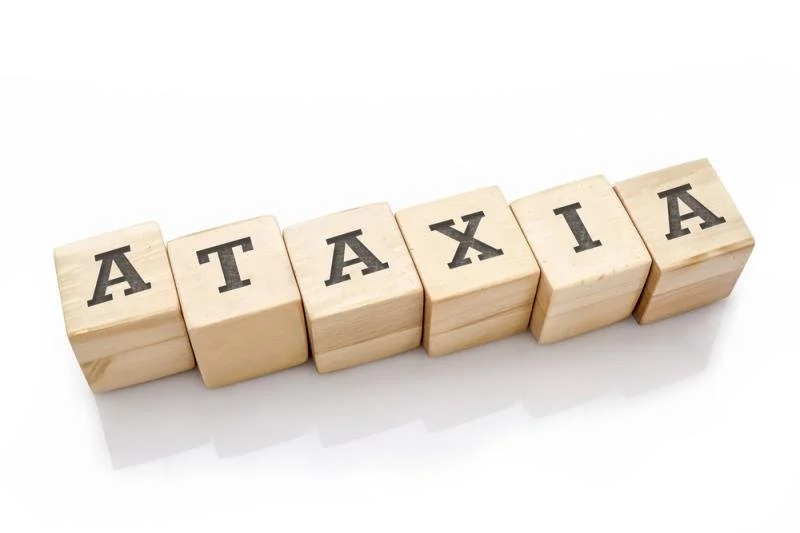What is Spinocerebellar Ataxia (SCA)?
Spinocerebellar ataxia (SCA) comprises a group of genetic disorders marked by the gradual breakdown of the cerebellum and other nervous system components. This erosion leads to difficulties in coordination, balance, and movement. Although SCA lacks a cure, certain lifestyle adjustments, including physical activity, can effectively alleviate symptoms and enhance the quality of life for those affected.
Pathological Mechanisms of SCA
The accumulation of abnormal proteins disrupts normal cellular functions, leading to the degeneration and loss of neurons in the cerebellum. This neuronal loss results in a progressive impairment of motor control and coordination, leading to the characteristic symptoms of spinocerebellar ataxia. These symptoms may include unsteady gait, poor coordination of limb movements, slurred speech, difficulty swallowing, and impaired eye movements.
Additionally, the degeneration may extend beyond the cerebellum and affect other parts of the central nervous system, including the brainstem, spinal cord, and peripheral nerves. This can result in a wide range of additional symptoms, such as muscle weakness, sensory abnormalities, and cognitive impairments, depending on the specific type of spinocerebellar ataxia.
Available Treatments and Therapies
While there is currently no cure for SCA, a range of treatment options and therapeutic strategies are available to manage its symptoms and enhance the quality of life for individuals living with the disorder. Pharmacological interventions may include medications aimed at alleviating specific symptoms, such as muscle relaxants to mitigate spasticity or tremors. Additionally, ongoing research is exploring the potential of targeted therapies that address the underlying molecular mechanisms of SCA, with some experimental treatments showing promising results in preclinical studies. Non-pharmacological approaches, such as physical therapy and occupational therapy, play a crucial role in the comprehensive management of SCA. These therapies focus on improving motor skills, enhancing mobility, and developing compensatory strategies to navigate daily challenges.
Exercise for SCA
Exercise is generally considered beneficial for people with SCA, although the type and intensity of exercise should be tailored to each individual's abilities and limitations. Here are a few ways exercise can be helpful:
Maintaining muscle strength and flexibility: Regular exercise can help preserve muscle strength, flexibility, and range of motion. Strengthening exercises can target specific muscle groups to compensate for weakness and improve overall stability.
Improving coordination and balance: SCA can affect coordination and balance, making individuals more prone to falls. Exercises that focus on balance and coordination, such as yoga, tai chi, and specific balance exercises, can help improve stability and reduce the risk of falls.
Enhancing cardiovascular fitness: Engaging in aerobic exercises, such as walking, cycling, or swimming, can improve cardiovascular fitness, increase endurance, and promote overall health and well-being.
Psychological benefits: Regular exercise has been shown to have positive effects on mood and mental well-being. It can help reduce stress, anxiety, and depression often associated with chronic conditions like SCA.
Social engagement: Participating in group exercise classes or activities can provide an opportunity for social interaction and support from others facing similar challenges. This can contribute to an improved sense of well-being and reduce feelings of isolation.
Nutritional Considerations
Emerging research suggests that adopting a balanced and nutrient-rich diet may offer potential benefits for individuals with SCA. Foods rich in antioxidants, such as berries, leafy greens, and nuts, have been associated with neuroprotective properties that could potentially slow down disease progression. Omega-3 fatty acids, commonly found in fatty fish like salmon, have also garnered attention for their potential anti-inflammatory effects and their role in maintaining neural health. While nutritional interventions alone cannot halt the progression of SCA, incorporating these dietary elements into a well-rounded meal plan may contribute to overall health and potentially complement other treatment strategies.
In summation, exercise and diet occupy a pivotal role in managing the symptoms of SCA. Exercise in particular aids in preserving muscle strength, refining coordination and balance, boosting cardiovascular fitness, and delivering psychological benefits. Our specialist Exercise Physiologists can provide a personalised exercise plan to assist you in managing the challenges of SCA an improving the quality of life. Call us today on 5456 1599 to find out how we can support you.



